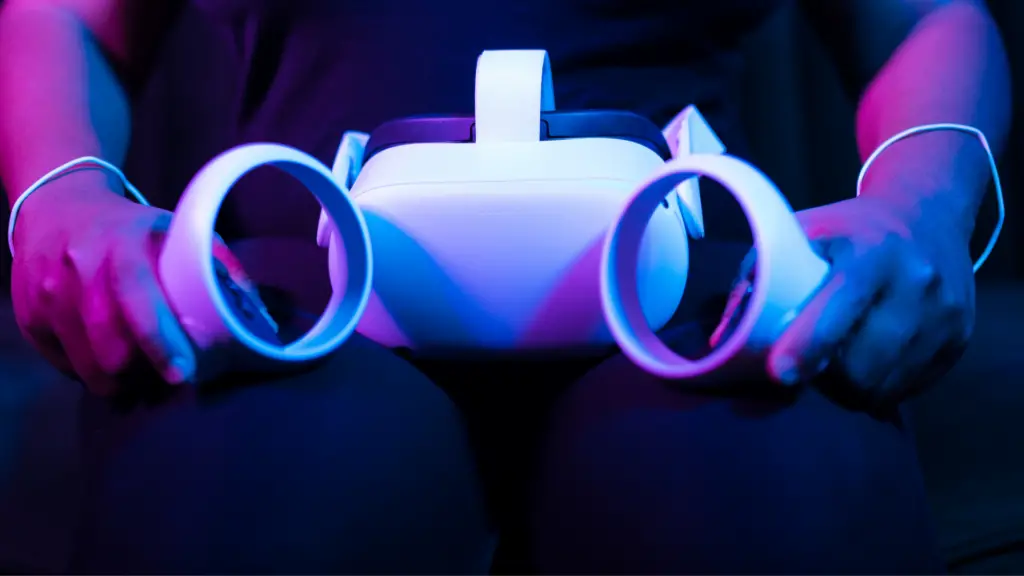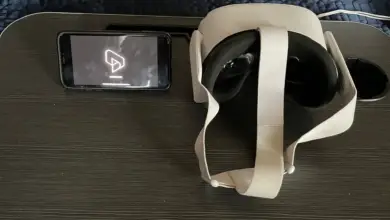How to Fix Oculus Quest Not Connecting to WiFi

There’s nothing worse than having connection issues with your Oculus Quest when trying to enjoy some time in virtual reality.
So why is your Oculus Quest / Quest 2 experiencing connection issues?
The most common reasons & solutions for WiFi connection issues on the Oculus Quest are your Oculus Quest may need to be rebooted, your router needs to be reset, too many devices may be connected to your router, your Oculus Quest is defaulting to the wrong date and time, issues maintaining high Wifi frequencies 5GHz in particular, or your device may have a defective WIFI chip.
Let’s dive deeper into each fix and walk you through it step by step.
How to Fix Oculus Quest Not Connecting to WiFi:
1. Reboot or Reset Your Router
The most common reason for this issue is that your ISP network provider may be limiting the number of devices that are connected to your network. As a result, you may receive a notification that says “connected no internet”.
Simply rebooting or resetting your router, as well as disconnecting any device that is connected to the network that isn’t being used, may solve the issue.
2. Reboot or Factory Reset Your Headset
To reboot your headset:
- keep your headset turned on
- hold the power button until you’re notified with the shutdown screen.
- Select Restart.
To factory reset your Oculus headset:
- Turn off your Oculus Headset
- Press & hold the minus volume and the power buttons for 10 seconds
- this will prompt the boot screen
- Select Factory Reset by using the volume buttons as controls and the power button to select.
The headset should reboot. This often fixes problems with connectivity.
3. Limited Connection Wrong Time & Date Problem Fix
The Oculus Quest needs to recognize the time to ensure certifications are accurate. Otherwise, it will default to a different time and date set in the android software, which will cause connection issues. And since we don’t have access to our manual android time settings, you will need to adjust the time & date through a sidequest.
If you notice that the date on your Oculus Quests home menu is incorrect, then the most likely solution is to:
- Plug in your Oculus to your PC
- Open SideQuest
- on the top right, select Installed Apps
- toggle Show all
- and locate com.android.settings
- Select Launch App
- Select System -> Time & Date -> Toggle off use network time & date
- now try reconnecting to your Wifi
4. SSID Issue
(Important Note: This issue has been resolved by Oculus with new updates, software releases, and revisions. However, we want to provide you with every solution possible in order to get your headset to work, and as this used to be an issue, if you’re using an older headset, it may apply to your situation. However, it’s unlikely)
Wifi networks that have a dual-band connection (i.e., have a 2.5GHZ and 5GHZ channel in the same network) may experience issues with Oculus Quest.
A dual-band connection typically allows your network to automatically switch frequencies in order to provide the most optimal connection. However, many users have noticed that after an open-ended period of time, the constant switch of connections will cause your Oculus Quest to completely lose its WiFi or cause an unstable connection.
Oculus Quests sometimes have problems connecting to certain Wifi frequencies. In particular, experts cite issues with the 5GHz band. Fixing this issue is a slightly more complicated effort.
There are three methods to solve this issue:
The first is by separating the 2.4 GHz and 5GHz networks; however, unfortunately, not all routers allow you to separate the network channels.
The second method is to use an APK extractor app with SideQuest, as discussed in the video below).
An alternative method to solve the issue:
- Initiate the factory reset on your Oculus Quest
- Bring up a connection on your computer and enter your router information
- Open Wireless Option and disable the 5 GHz while enabling the 2.4GHz
- Set up a hotspot on your computer and connect your Oculus Quest
- Download and install software updates to install the patch to allow better connectivity
- Switch router and computer back to regular 5GHz settings
- Restart the Oculus Quest headset and ensure that it functions with the 5GHz bandwidth.
5. Check the Signal Strength:
Sometimes the problem is that there is not enough signal to maintain a stable connection.
Check the signal strength on the modem. If it’s weak, you may need to check with your internet provider for ways to enhance the signal.
If the router and modem show a strong signal, it may be a simple matter of distance.
Being too far away from the router may result in not getting a strong enough signal to properly maintain your Oculus connection.
You may need to change rooms or rearrange things so that you can remain closer to the signal source.
Test Signal Strength and Network:
- Cycle the power on the modem to test how well it’s working.
- Cycling is a simple method: Turn it off, leave it for a minimum of 10 seconds, then turn it back on.
- Double-check how much power and speed your internet connection is producing.
- Double-Check the requirements for your Oculus Quest.
- It may be a matter of incompatibility between your Internet and your Oculus.
The network needs a minimum connection speed of 225 Mbps. Slower speeds may cause issues with connectivity and usage.
6. Check the Portal Types and Connections:
There is a type of portal called captive portals. They’re most commonly used for public WiFi networks and hotspots in locations like hotels or airports.
Captive portals can be a problem for connecting WiFi to your Oculus Quest.
During Setup, the Oculus Quest cannot be used with a captive portal. You’ll need to use a secured connection to set up your Oculus Quest.
After setup, Oculus Quest may or may not work on captive portals.
7. Check the Link Between Your Phone and the Internet:
Sometimes your phone may get confused between the Oculus connection and the Router connection.
It may even duplicate the network address and try to connect to both, which will result in connection issues.
If this happens, you may need to do one of two things:
1. Disable and re-enable WiFi on your phone to reset the connection.
2. If the problem is a doubled connection, you may need to delete your information and enter a new network profile on your phone.
8. Check Technological Compatability:
Sometimes the bandwidth or operating systems between router, computer, and phone are not compatible.
Checking the compatibility requirements between all three pieces of equipment is important.
You may need to adjust your setup before the connection snaps into place.
Check Computer Connections:
The Oculus Quest has a specific connector known as the Oculus Link. It requires a compatible USB 3.0 port on the computer.
With a different USB cord, you may not get the same results. It can also interfere with your connection in other ways.
Likewise, make sure your computer has an appropriate operating system in place.
The recommended system is Windows 10 with 8-16 Gb RAM.
9. Check Your Phone Compatability with Oculus Quest
Manufacturers suggest an iPhone with iOS 10 or higher. Earlier phones may not work with your Oculus properly.
Manufacturers recommend an Android with 6.0 or higher.
Sometimes the phone hardware configuration is not compatible with the Oculus Quest hardware.
Upgrades may be required before you can get the most out of your Oculus Quest.
10. Double-Check Your Drivers
Sometimes, there are issues with the drivers on the computer that can prevent the proper connections from being made.
To fix this, you’ll need to double-check the drivers on your PC. They’re usually found in this location:
c:\Program Files\Oculus\Support\oculus-drivers\oculus-driver.exe.
If they’re corrupted or damaged, you may need to re-download them.
Double Check Your App Downloads and Settings:
You may also want to make sure that your Oculus Apps are properly downloaded onto your computer and your phone.
Improperly downloaded and corrupted applications on your computer or phone can result in poor or malfunctioning connections.
Even if the result isn’t a ‘Not Connecting to WiFi’ message, this can be an issue that leads to further problems down the line.
What If I Get a Limited Connection Message?
Limited connection means that there is a functioning connection but an error with the computer identification.
Limited Connection generally means the computer doesn’t register an I.P. address when connecting.
In this situation, your Oculus Quest won’t actually connect. You may need to restart your router to fix this problem or if you notice an incorrect date and time, you will need to adjust it through SideQuest as shown above on method #3.
What If I Keep Getting Authentication Problems?
If you’re getting errors in authentication, the problem can be a router or headset issue.
Recommendations are to start and restart the router and headset until the problem resolves.
However, you may need to contact Oculus Support if restarting does not solve the issue.
You may also need to uninstall and redownload apps or games that you accessed most recently prior to the error commencing.
Are There Any Ways To Be Sure What The Problem Is?
There are various troubleshooting apps that can be used to search for and resolve issues.
The most commonly recommended one is RouteThisHelps.
Steps for usage include:
- Download app on computer or tablet
- Open the app and hit Begin
- Type code FBRL
- Stand close to Oculus network and start Network Scan
- Tap Improve Device Performance
- Follow app directions and see what the results are.
What If None Of These is the Problem?
If you’ve tried all these steps and double-checked all your information and requirements, then it may be a more serious issue.
If none of the steps you’ve taken don’t fix the problem, then it’s time to get in contact with Oculus Tech Support.
They may be able to point you in the direction of some more obscure issues that may be affecting your device.
- How to Pair Meta Quest 3 Controllers with Your Quest 3 Headset: A Quick Guide
- How to Charge Meta Quest 3: A Guide to Powering Up Your VR Experience
- How to Cast Meta Quest 3 to Samsung TV: A Step-by-Step Guide
- How To Factory Reset Your Meta Quest 3: A Step-by-Step Guide
- How to Power On and Off the Meta Quest 3





